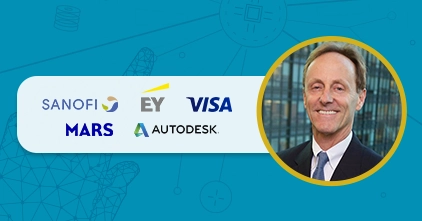Learning never stops. That’s why organizations are seeking ways to effectively upskill their growing workforce. Here are 5 EdTech trends your organization should implement:

The corporate training scene is also vulnerable to the current situation the world is facing right now.
New learning technologies are here as solutions to the issues brought about by remote work and distance learning. These technologies are educational technologies which make it possible for more organizations to continue operations and learning in the flow of work through distance learning modalities.
To put it simply, Educational Technology (or EdTech, for short) involves the combined use of computer hardware, software, educational theory and practice in facilitating learning.
In this article, we provide you with 5 educational technologies your organization should already leverage right NOW:
Increased Digitization
With the current situation in the world today, organizations are starting to adapt with the ways and processes in the “new normal.”
Workplace learning is starting to shift to digital learning through eLearning platforms, those which most companies are only putting as a second priority after face-to-face learning.
As more organizations are now open for more work-from-home and remote work opportunities, some companies’ business models depend entirely on the internet for them to succeed.
In this era, the 4th Industrial Revolution, tech-savvy professionals are more likely to do great at work as online environments continue to be in high demand.
But don’t worry! You can follow these simple steps to achieve a more digitized learning environment:
- Market your training programs and other company announcements through short informative videos.
- Use video conferencing and collaboration tools for more engaging distance learning.
- Gamify your learning programs through implementing course badges, points, and other reward systems and incentives.
By following these steps, you can increase learner engagement while at the same time, you also maximize the use of EdTech that increases training relevance and effectiveness.

Workforce Mobility & Workflow Learning
As we might understand now, mobile learning is more than just a mode of presentation.
Instead, mobile learning is a part of a learning strategy among training designers and educational technologists. And today’s average employee especially in a developed country/region has a smartphone to begin with.
This means that organizations can easily embrace mobility, not only at work but also in workplace learning through EdTech. With the capability of more 5G and workforce mobility, organizations can expect learning in the flow of work especially in those that achieved digital transformation earlier than their counterparts.
Interestingly, in the U.S. alone, 4.7 million people work from home at least half a week. Telecommuting (or working from home) is now a phenomenon that more and more organizations are seeing unfold before their eyes.
With this, you should start transitioning to more digital learning modalities that can effectively upskill and reskill your workforce — both office-based and remote.
Self-directed Learning Through Learning Experience Platform (LXP)
More progressive organizations are now looking into a learner-centered approach to learning compared to putting the sole focus on the instructors or trainers. In fact, according to Towards Maturity, almost 20% of learners are leveraging curation tools, and this has the tendency to grow significantly in the next few years.
More self-paced learning can be effectively done through a learning experience platform (LXP). Compared to your regular LMS, LXP is more advanced, more intuitive, and more flexible.
Good news! This is said to drive more learner engagement because learners can easily discover relevant and recommend learning content on their own through AI and algorithms.
The rationale behind self-directed learning is that most adult learners usually don’t want to be spoon-fed by instructors; they want to learn whenever they want and at the pace they’re comfortable with. This is why self-paced learning is becoming more popular among organizations, now especially that gradually, companies are trying to transition to online learning.

Learning Analytics
According to the eLearning Industry, 2.5 billion gigabytes worth of data is being generated everyday. But unfortunately, only 3% of surveyed professionals reported that they can act on collected customer data.
This means that organizations should be equipped with the right tools and skills to leverage learning data to improve business processes and corporate training initiatives.
Actually, more and more organizations are producing data everyday, which is why now is a great opportunity for you to build a data-centered organization.
To start, here are 4 kinds of learning analytics your organization should be leveraging:
Descriptive Analytics
This is the most basic kind of analytics. Your organization can use this to evaluate the data gathered through your LMS. Some examples of this are:
- number of learners;
- number of hours spent on the eLearning courses and LMS/LXP; and
- average test scores
These data are often represented through real time dashboards and reports that can help you, the managers, and other stakeholders to get to know the status of online training initiatives in your organization.
Diagnostic Analytics
This type of analytics is used to understand the reasons, trends, and outliers in your learning data.
For example, the business communication course on presentation has a low completion rate among more experienced salespeople while new hires find it very interesting.
Diagnostic analytics can help senior managers find out that the course is too easy for more senior employees. This is why the stretch zone in learning should always be achieved. Here, diagnostic analytics can help you determine the reason behind the lack or success of your learning programs.
Predictive Analytics
While this type of analytics doesn’t tell you what will happen in the future, it can forecast what might happen next. It also aids L&D professionals in identifying which learners may encounter more difficulties in completing the courses in the long run. As a result, this analytics can help you plan what training measures to do next.
You can better realize the advantages of predictive analytics in talent management. In predictive reporting, analytics can forecast how your employees are growing in their respective roles in your organization. So start by tracking and forecasting individual learning paths, training, and upskilling activities.
Prescriptive Analytics
Aside from predicting what might happen, prescriptive analytics can also help you understand why it will happen. Also, it can provide recommendations on what can be done to further improve your L&D programs.
Let’s say your learners are currently taking leadership and communication training. And learner surveys reveal that while this training helps your employees learn the basics of communication, it’s only good in theory.
This means that the training could be more helpful if your learners can apply it in their jobs.
Based on this data, you can come up with a solution. This is to provide your learners with personalized and industry-specific training. And this can be done by letting them take training paths to increase the relevance of training in the workplace.
Artificial Intelligence (AI)
Now that more organizations are starting to realize the perks of fostering a data-driven culture in the workplace through the limitless data they can harness, companies are now leveraging AI to facilitate a huge impact on L&D.
The use of AI has already been here for years. And it’s responsible for our modern video games and interactive apps today. Even EdTech today is starting to make use of AI. Here are ways you can leverage it to elevate your workplace learning strategy:
- Personalized Learning
The thing is that computers can easily and swiftly analyze data and provide real-time feedback.
With AI, your training assessment tools can now adapt depending on your learners’ unique learning experiences. AI can suggest tailored training paths based on real-time data from your learners’ training history, course completions, and current goals.
- Training Reinforcement
AI can be used to review your employees with the specific lessons they fall short in.
For example, one of your employees had a hard time identifying the meaning of some marketing jargon in his/her target language. AI can be used to instantly notify him/her and personalize the lessons and the quizzes based on the learner’s progress and performance during the lesson.
- Measuring Learning Effectiveness and ROI
With more intelligent systems in place, large quantities of data can now be easily analyzed and assessed. AI will be able to help you modify training programs based on success and failure points based on different sources of data.
This is why digital transformation in organizations is pivotal to the further development of businesses today. In turn, ROI can be increased.

Final Thoughts
For organizations worldwide, going digital is the way to go!
With a more data-driven approach, companies can better leverage EdTech trends that are now being streamlined in the corporate training industry. As a result, this can help L&D and HR professionals boost learner engagement and training productivity.
So if your company is still beginning to shift to online learning, you can start getting to know about how you can smoothly shift from face-to-face learning to digital (and distance) learning with our FREE eBook!




